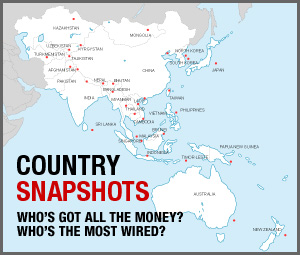
Migration
In 2005 there were 191 million international migrants, of whom 90 percent were migrant workers and their families. Of these, 25 million were in Asia. Immigration is a contentious issue, particularly in Western democracies, but also in Asia, and managing the effects of migration will remain a major challenge for most nations over the next decade. Currently, the Guest Worker Program is seen by some as the best future solution for filling labour market gaps. However, the contracts offered to foreign workers are typically short-term, and include a range of restrictions. These stipulations often include that the majority of workers are not permitted to seek employment elsewhere, cannot bring their families with them and cannot settle in the host country, meaning they must return to their home state on completing their contract. Still, in some countries highly-skilled workers are being increasingly recruited on the promise that they will be able to qualify for citizenship status.
In the past, migration movements in Asia were intra-continental and made up of mostly Chinese and Indian workers moving to Southeast Asia. Most migrants were males who worked in the plantation and mining sectors and female migration was largely associational or limited. But since the 1990s, international labour migration is occurring on a much greater scale than before. It’s now trans-continental as well as intra-continental and includes a larger range of groups with economic and labour market segments, rather than national economies, attracting both male and female migrants. In labour-sending countries, the state is often now more involved in developing policies and programs to facilitate migration and reduce transaction costs associated with remittance transfers. The memorandum of understanding, a document similar to a contract that describes bilateral or multilateral agreements between parties, has therefore become an important instrument for helping manage and regulate foreign worker recruitment.
Another important change has been the feminization of migration. The gendering of migration is connected with emerging gender-selective policies of the labour-importing countries and the development of gender-specific employment markets. In particular, care-giving demands are both being generated and met through migrant women’s employment, underscoring the complex causal relations that bind migration, gendered labour and care-giving regimes. Many female domestic workers work under unregulated conditions where they are exploited and often abused, and it’s often being left to human rights groups to seek justice for them.
Government officials, intermediaries and brokers who steer migrants across borders have also begun increasing costs for them, resulting in increasing levels of irregular migration and human trafficking. Thus, effective governance of migration is currently more dependent on global governance, interstate cooperation and transnational networks than individual states.
Amarjit Kaur, FASSA, is a Professor of Economic History at the School of Business, Economics and Public Policy, University of New England in Armidale Australia.











